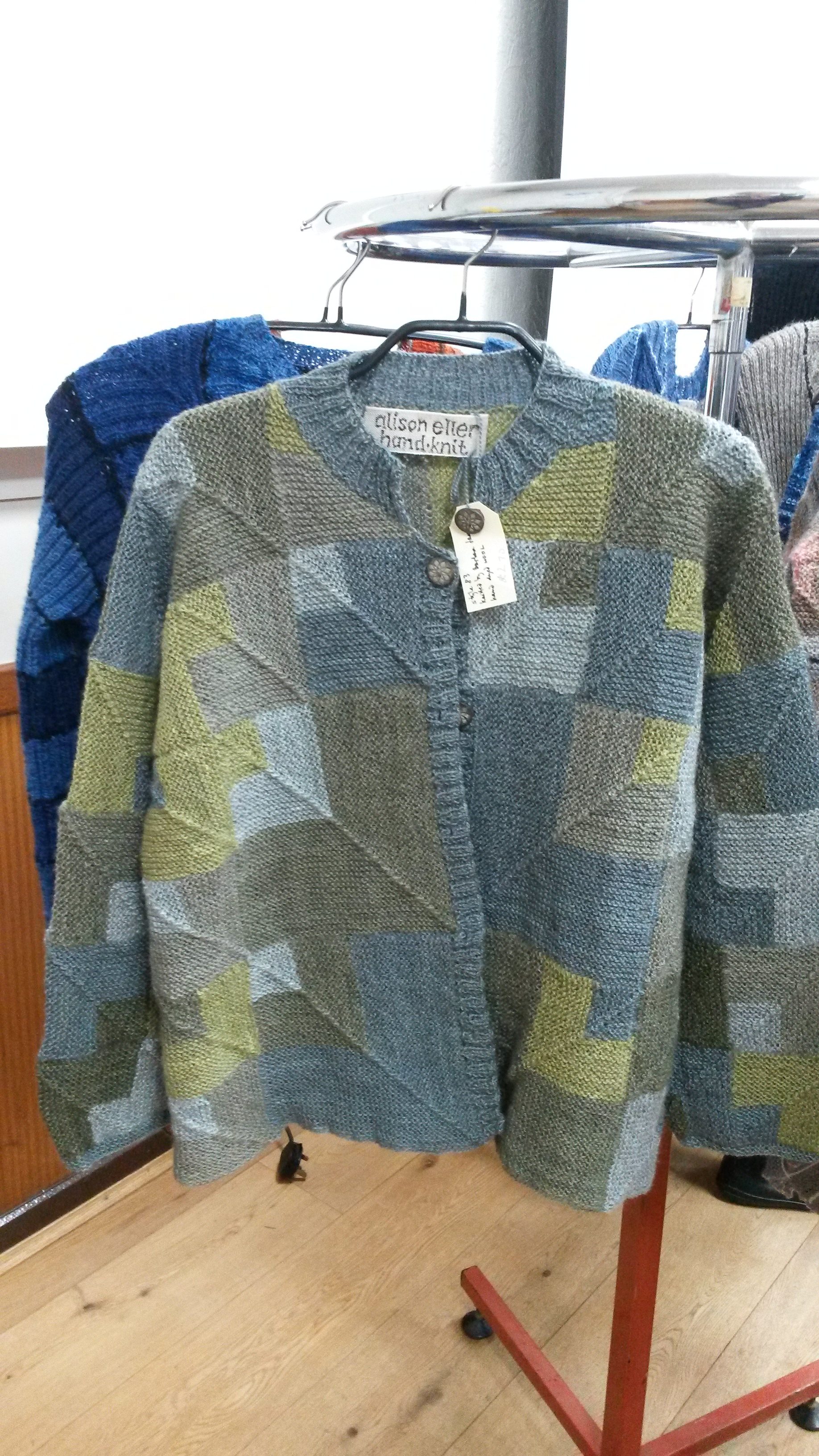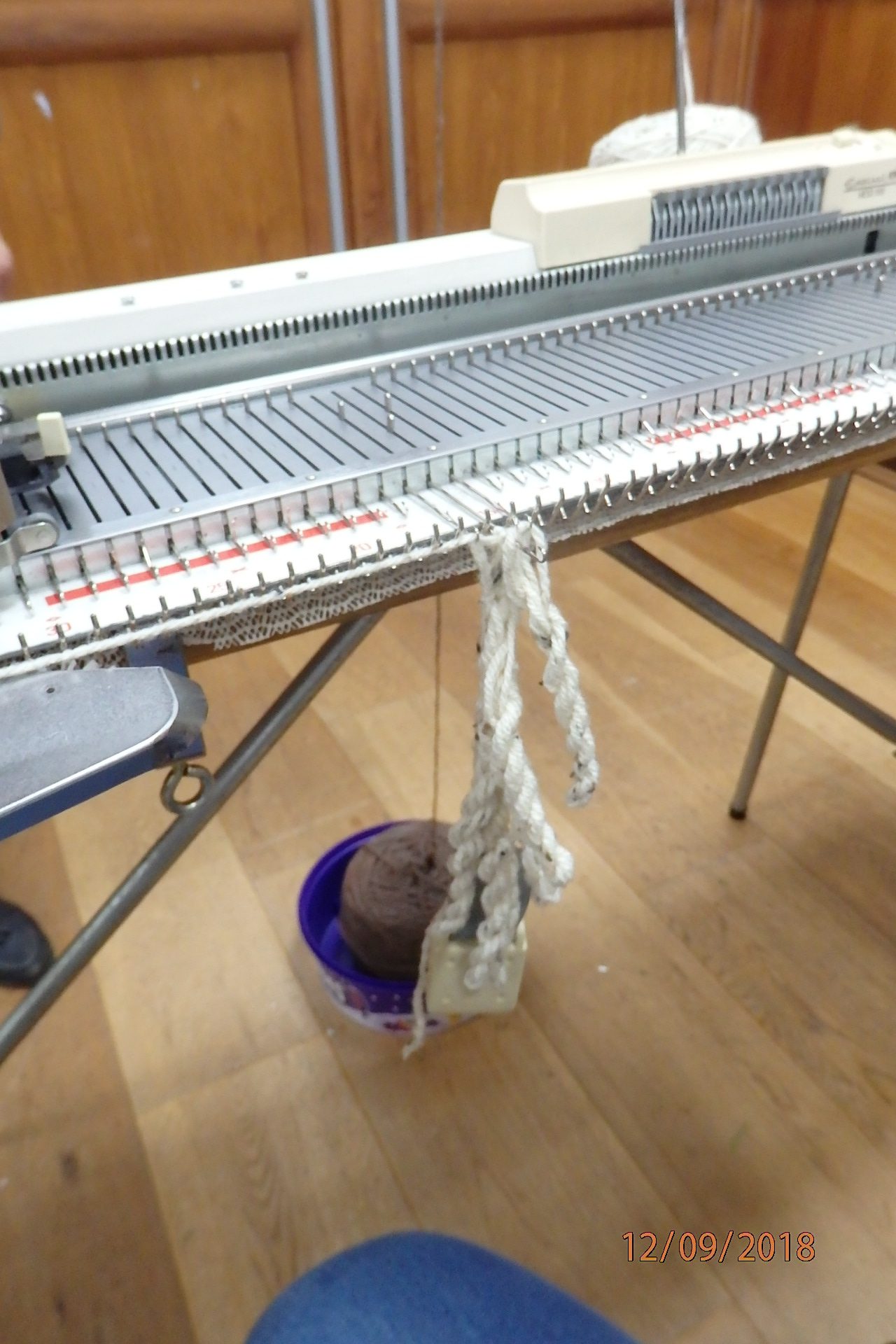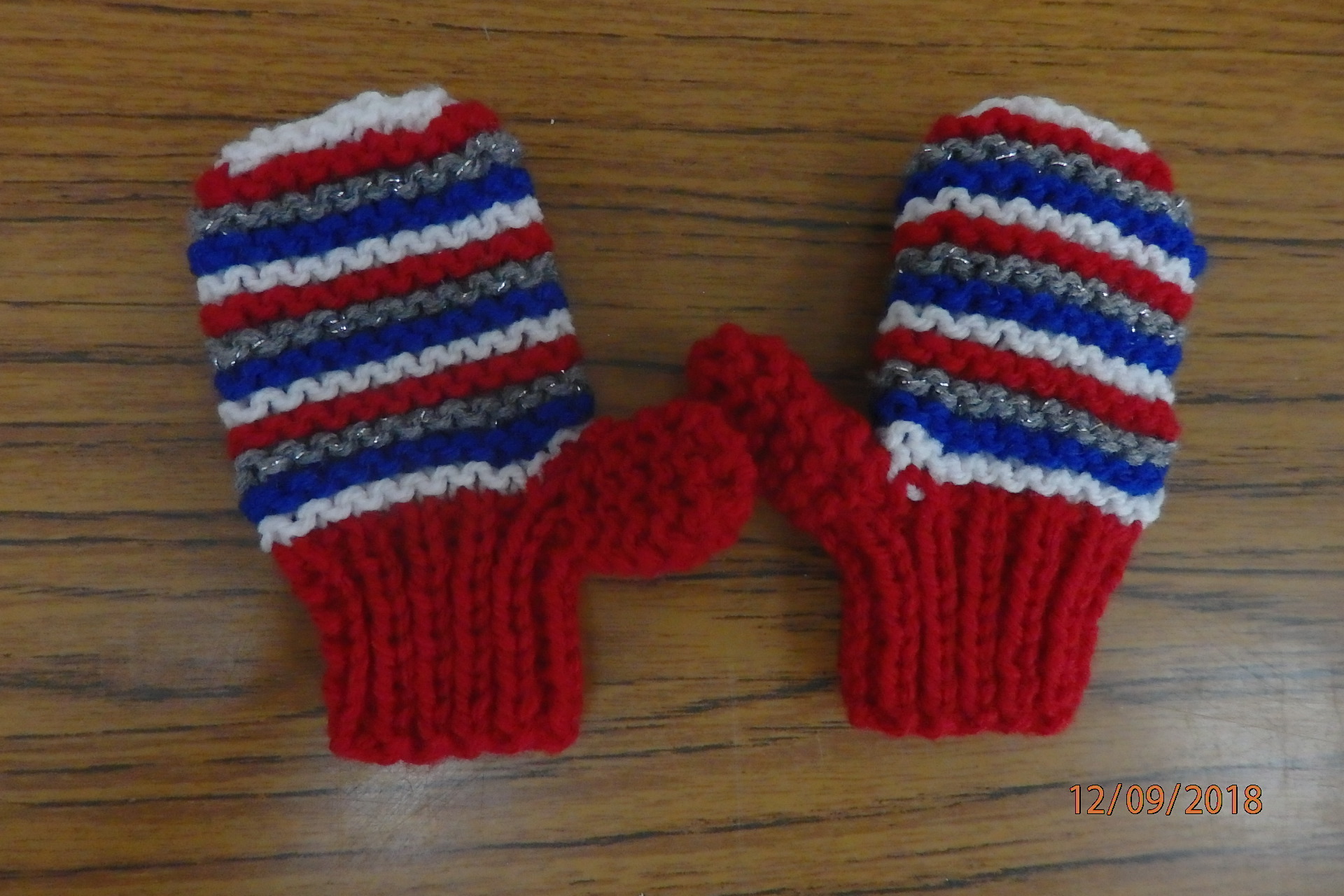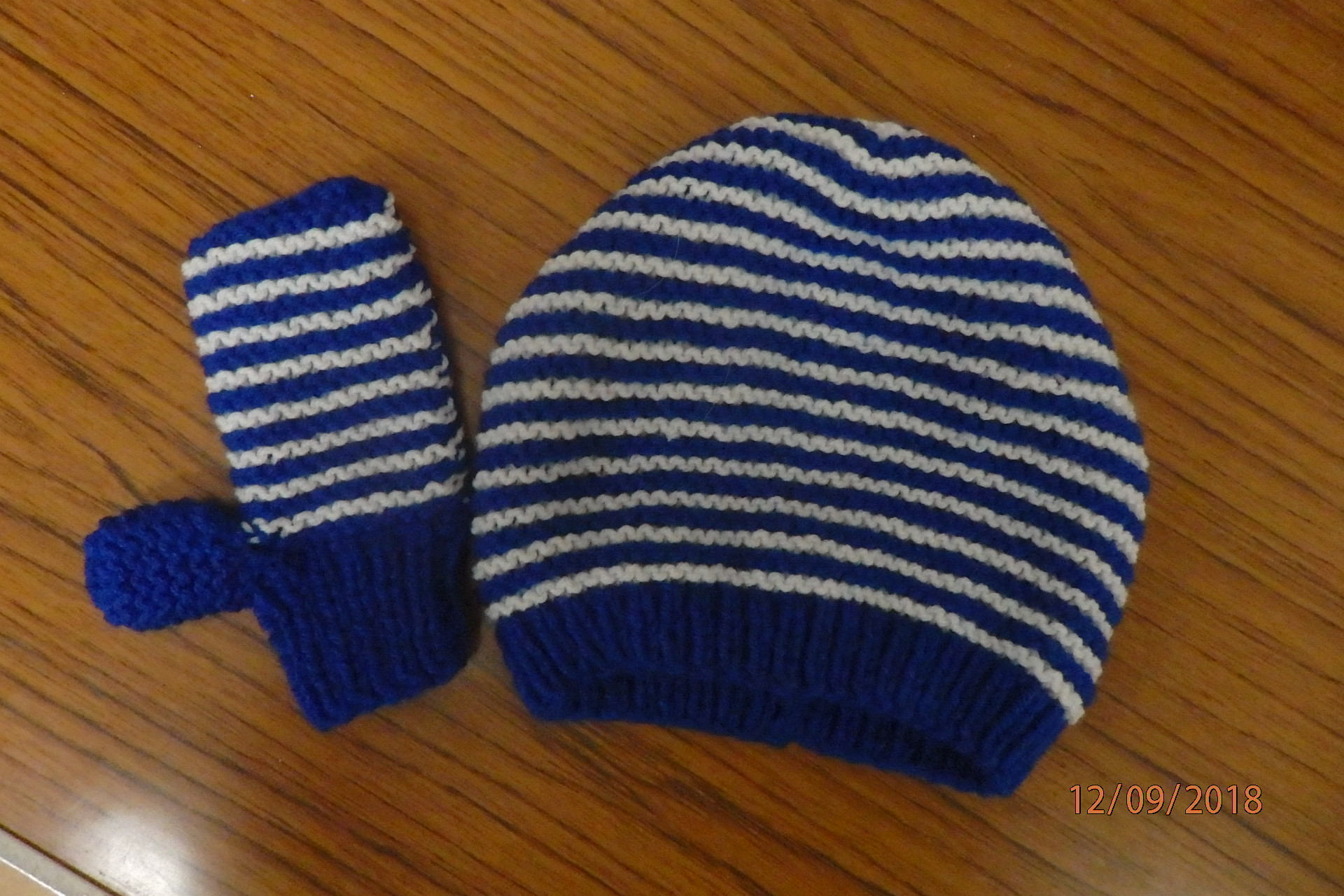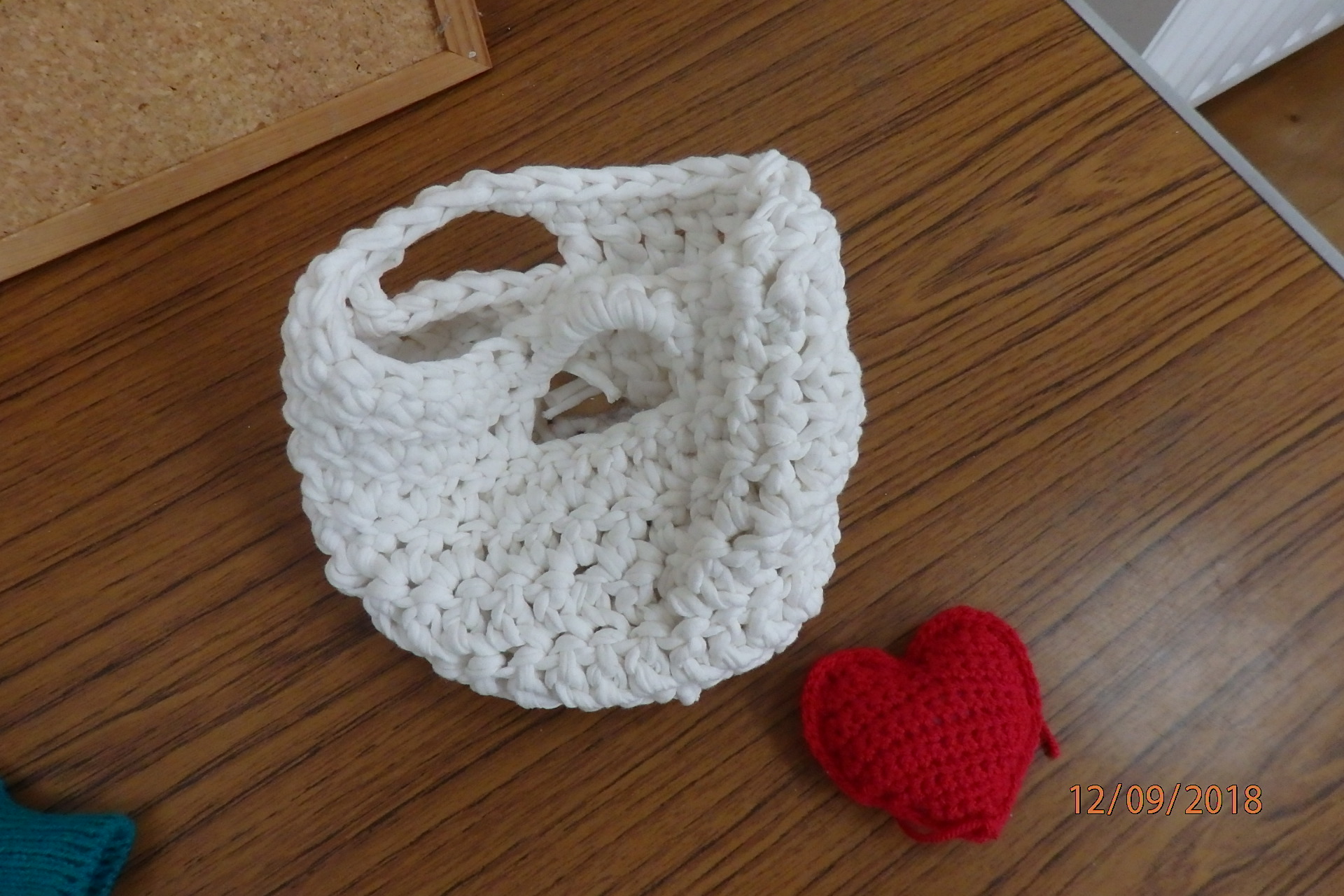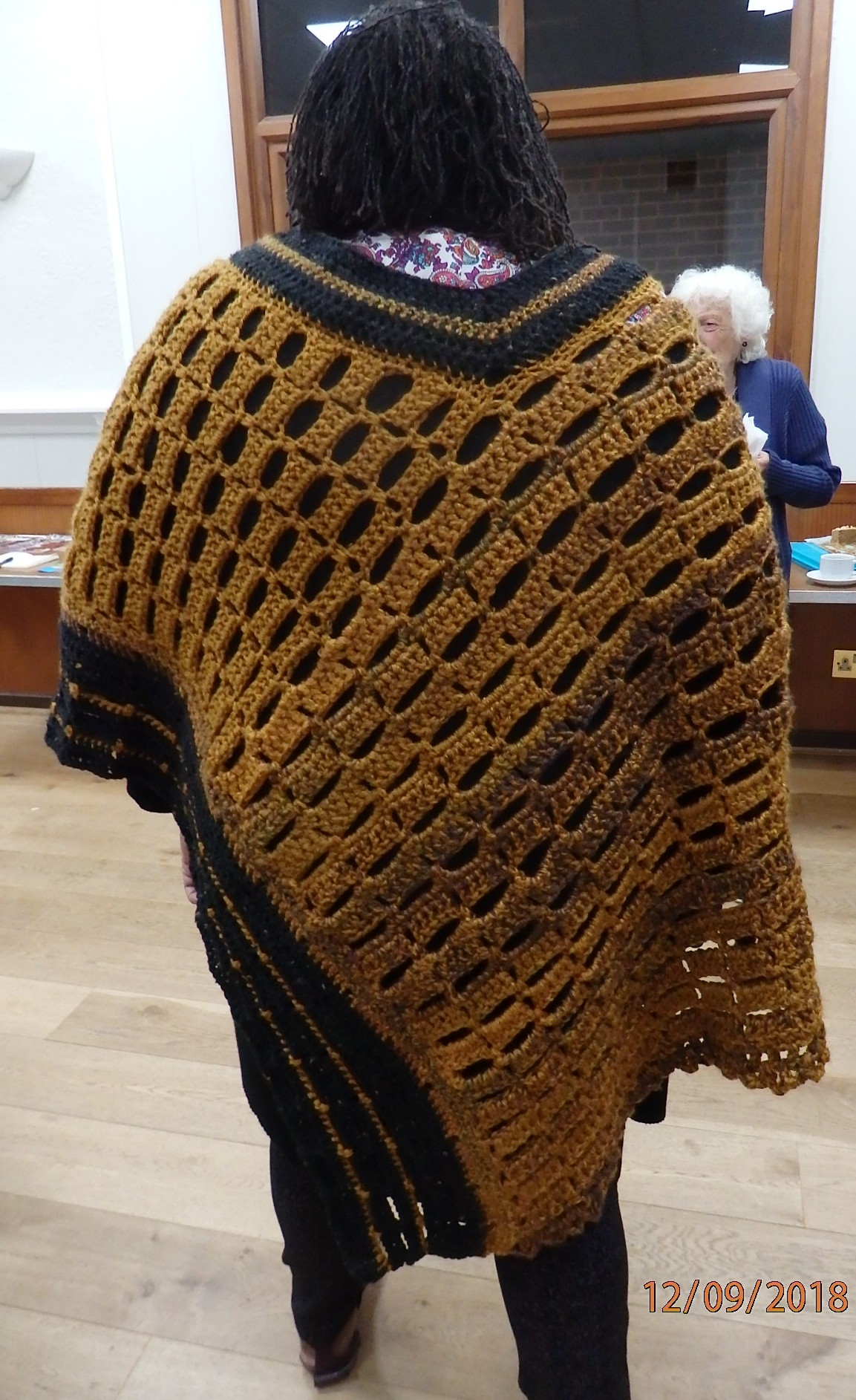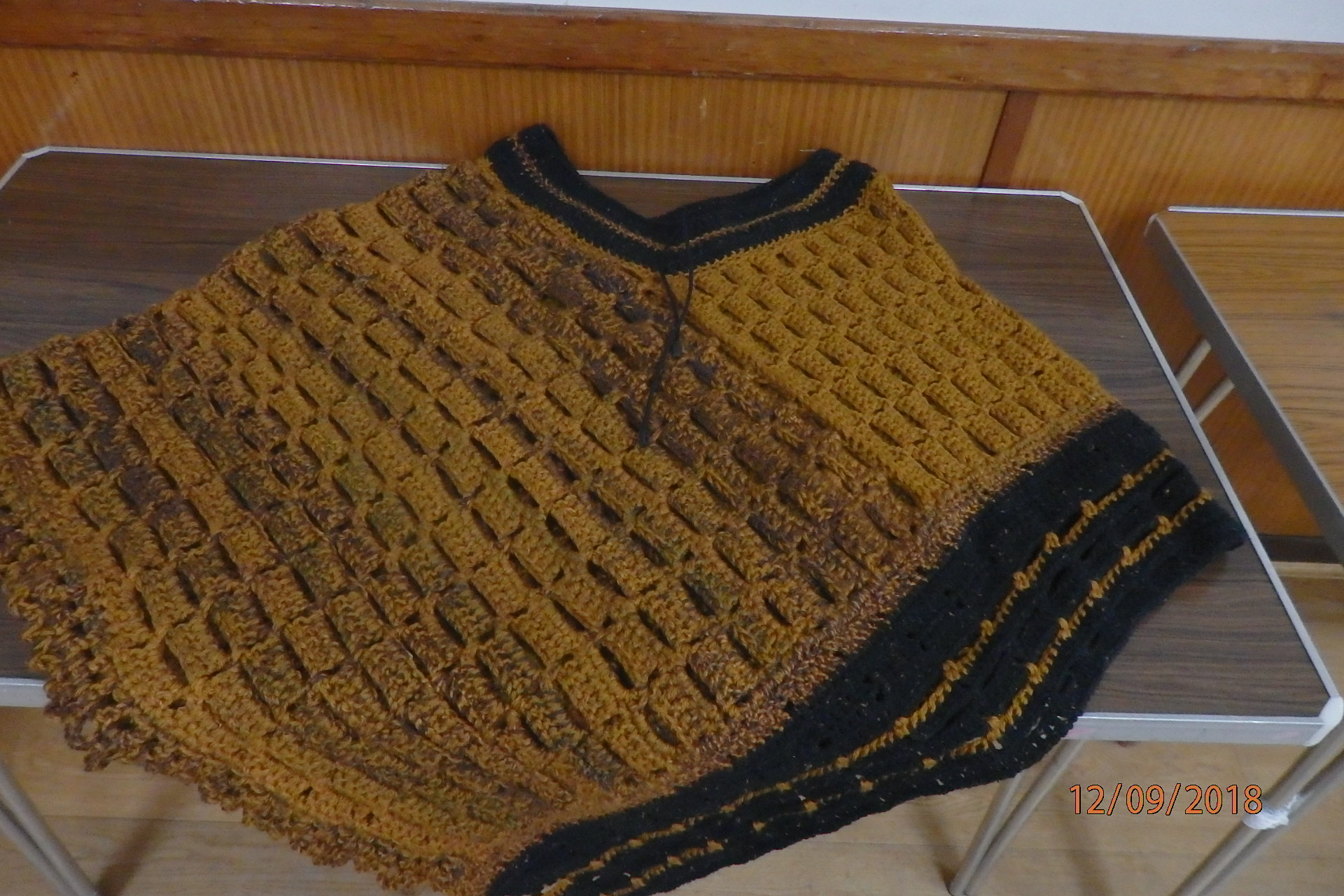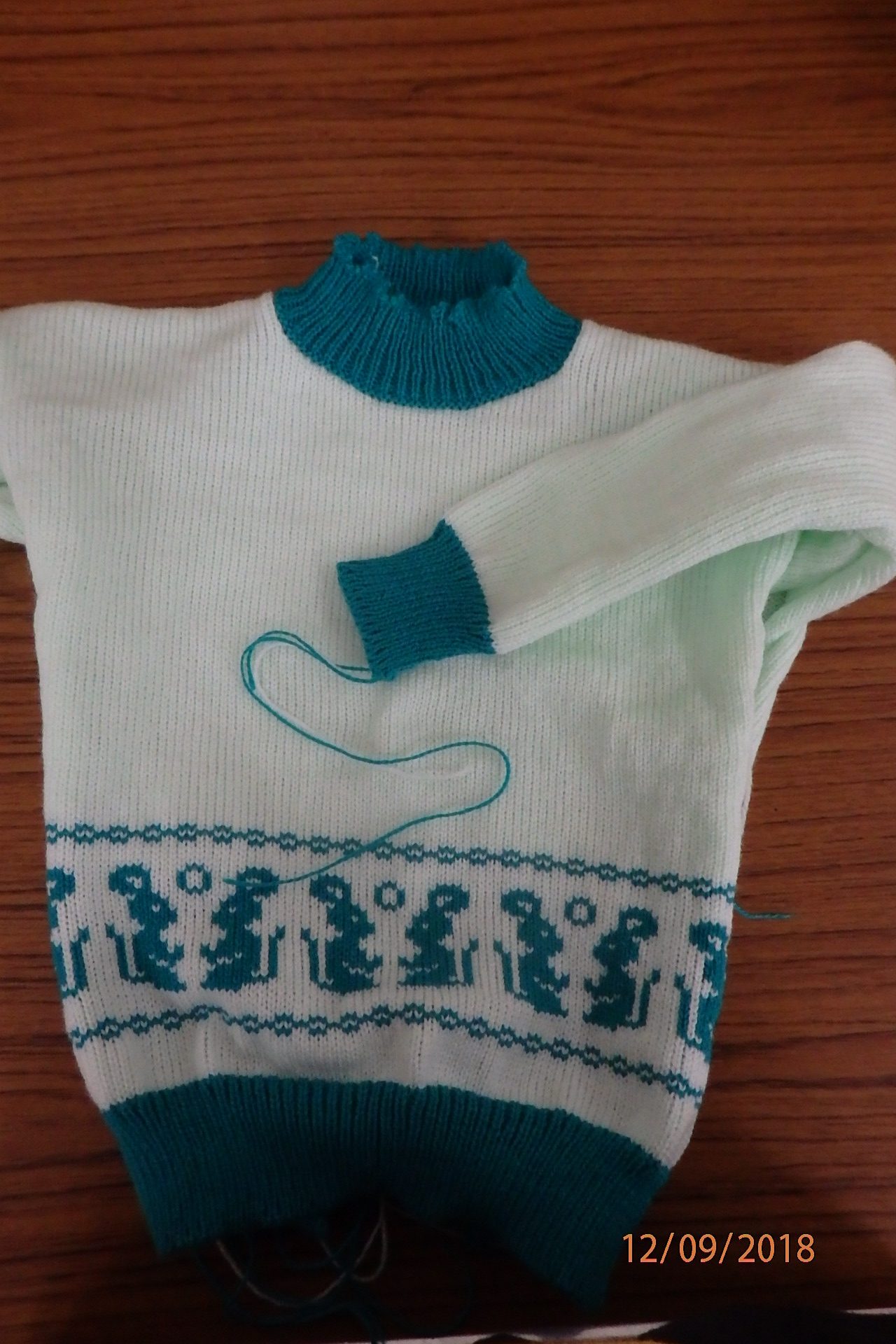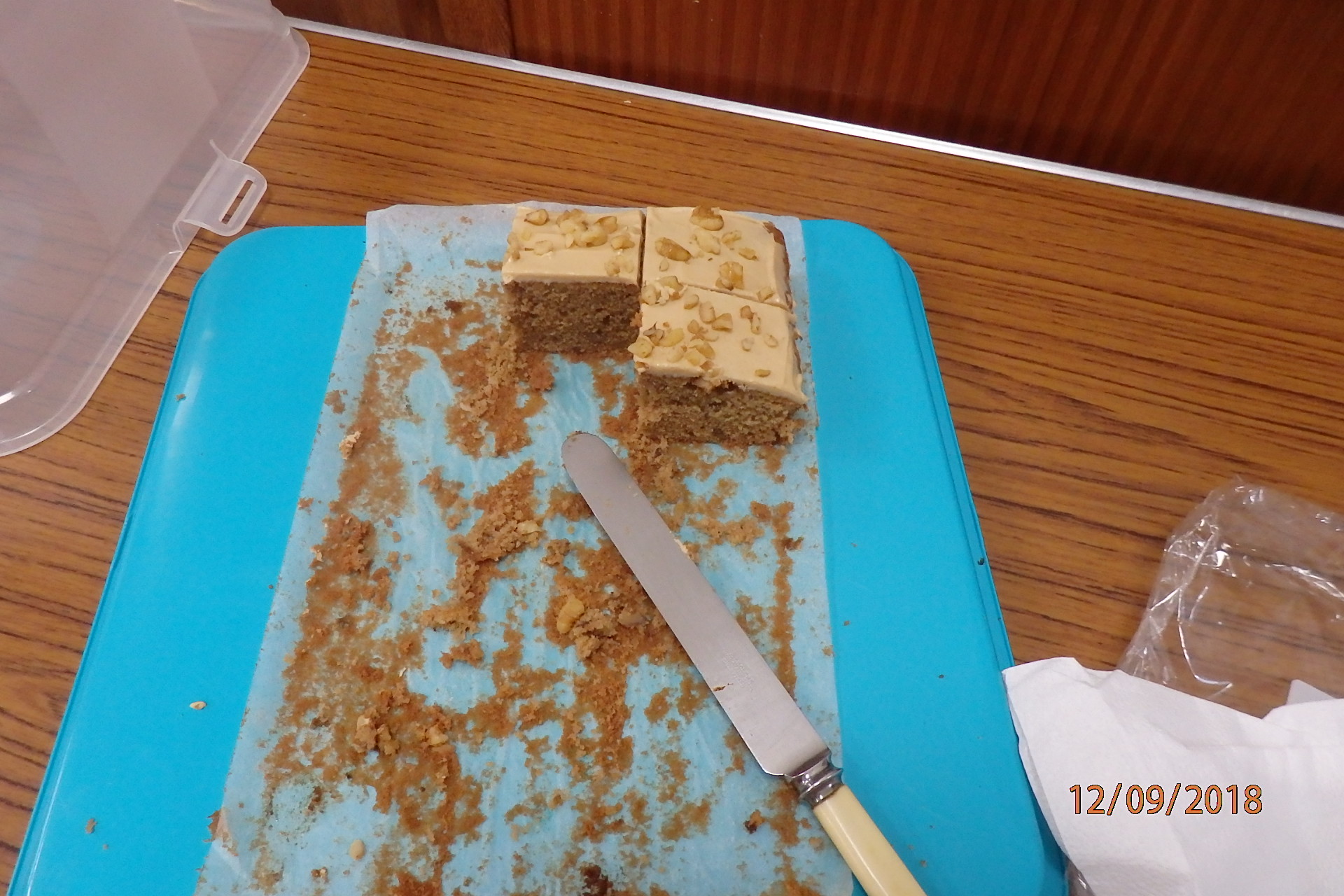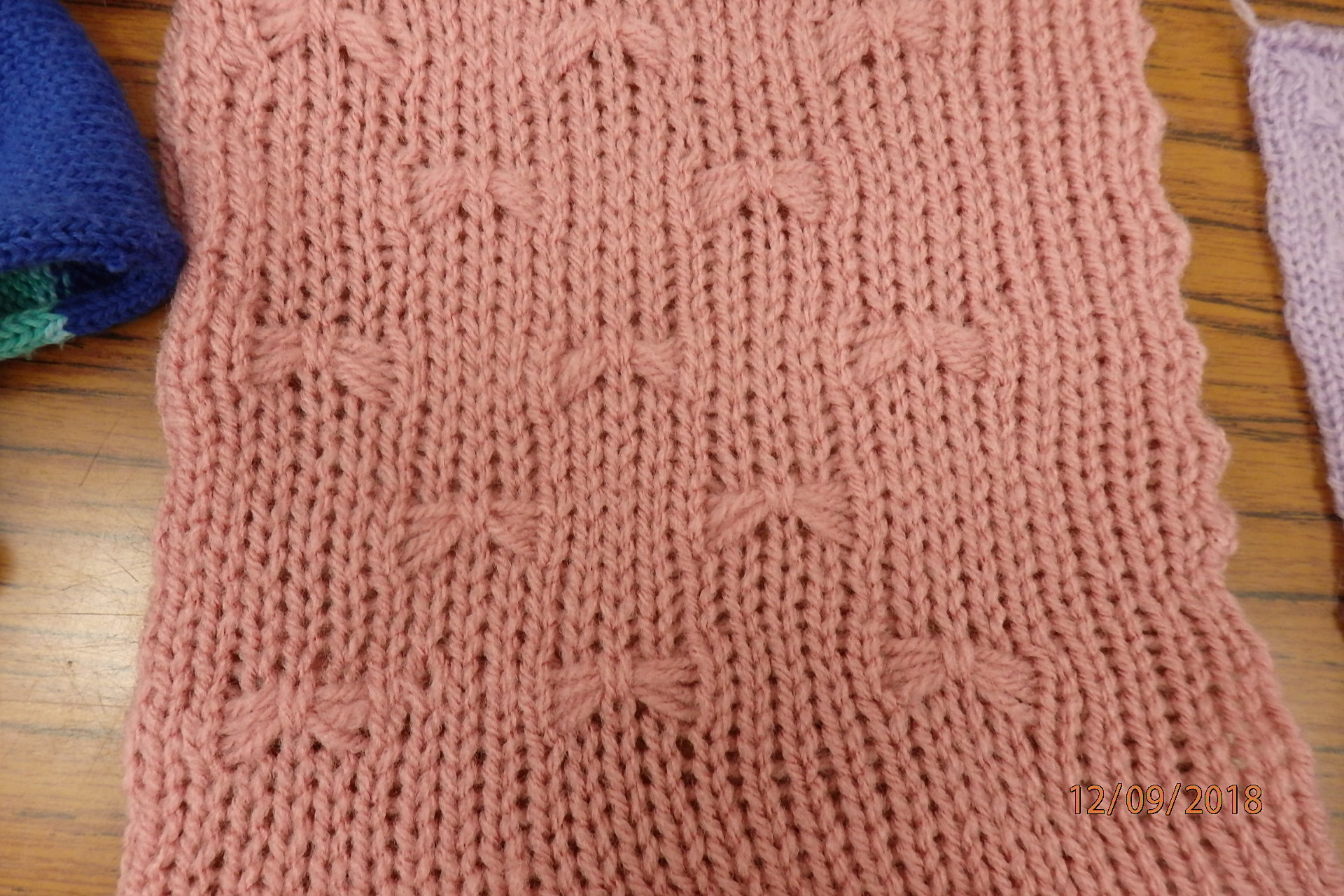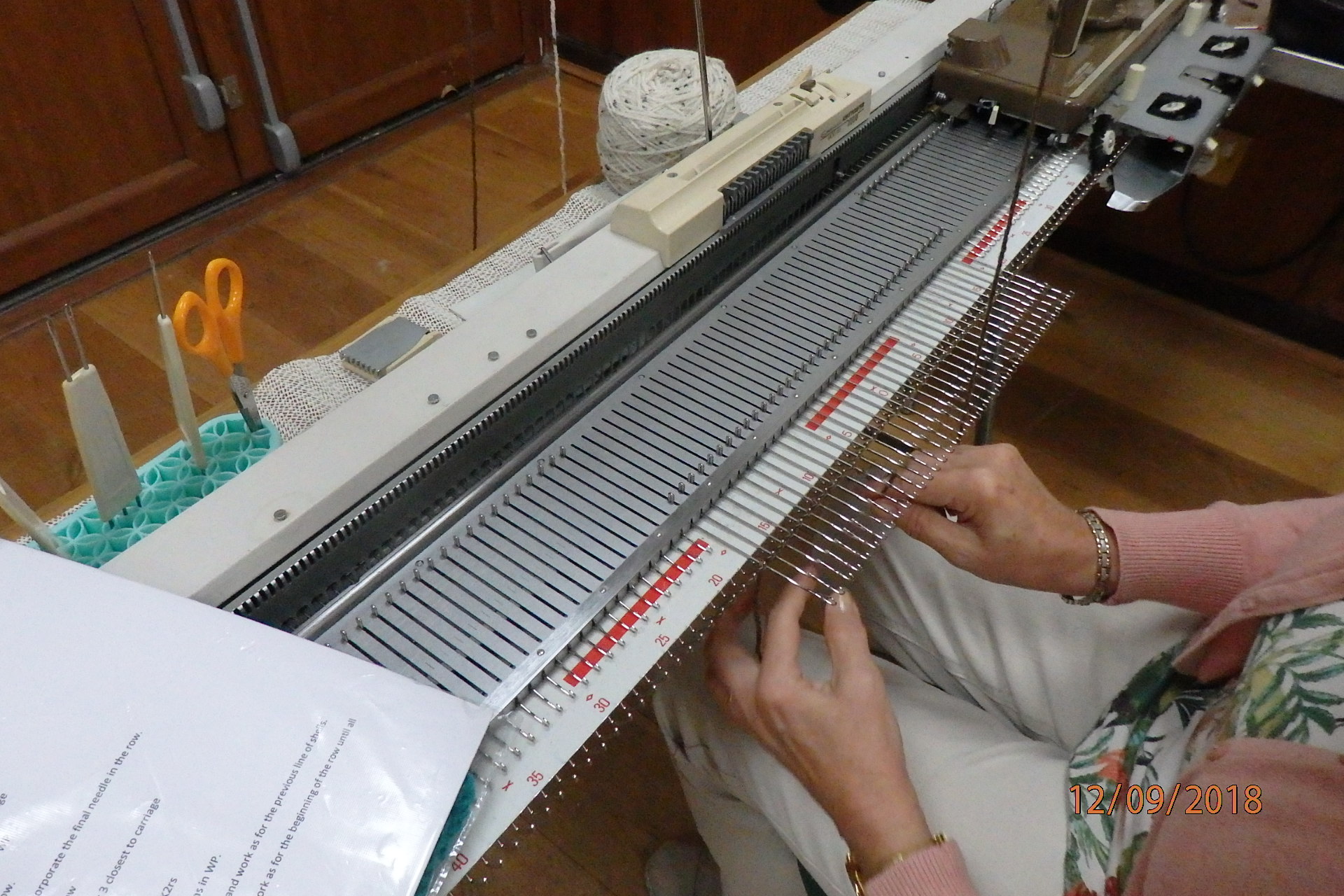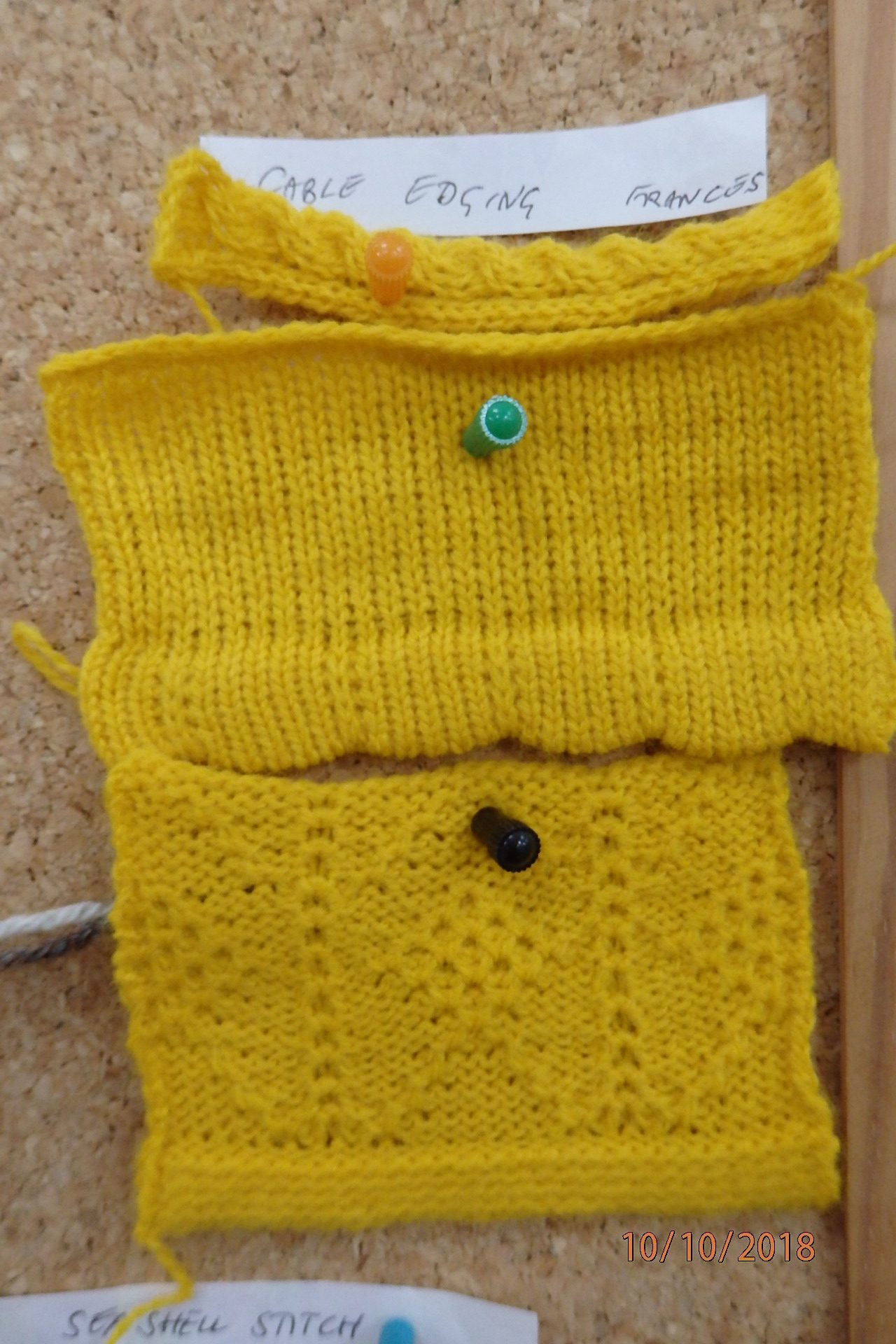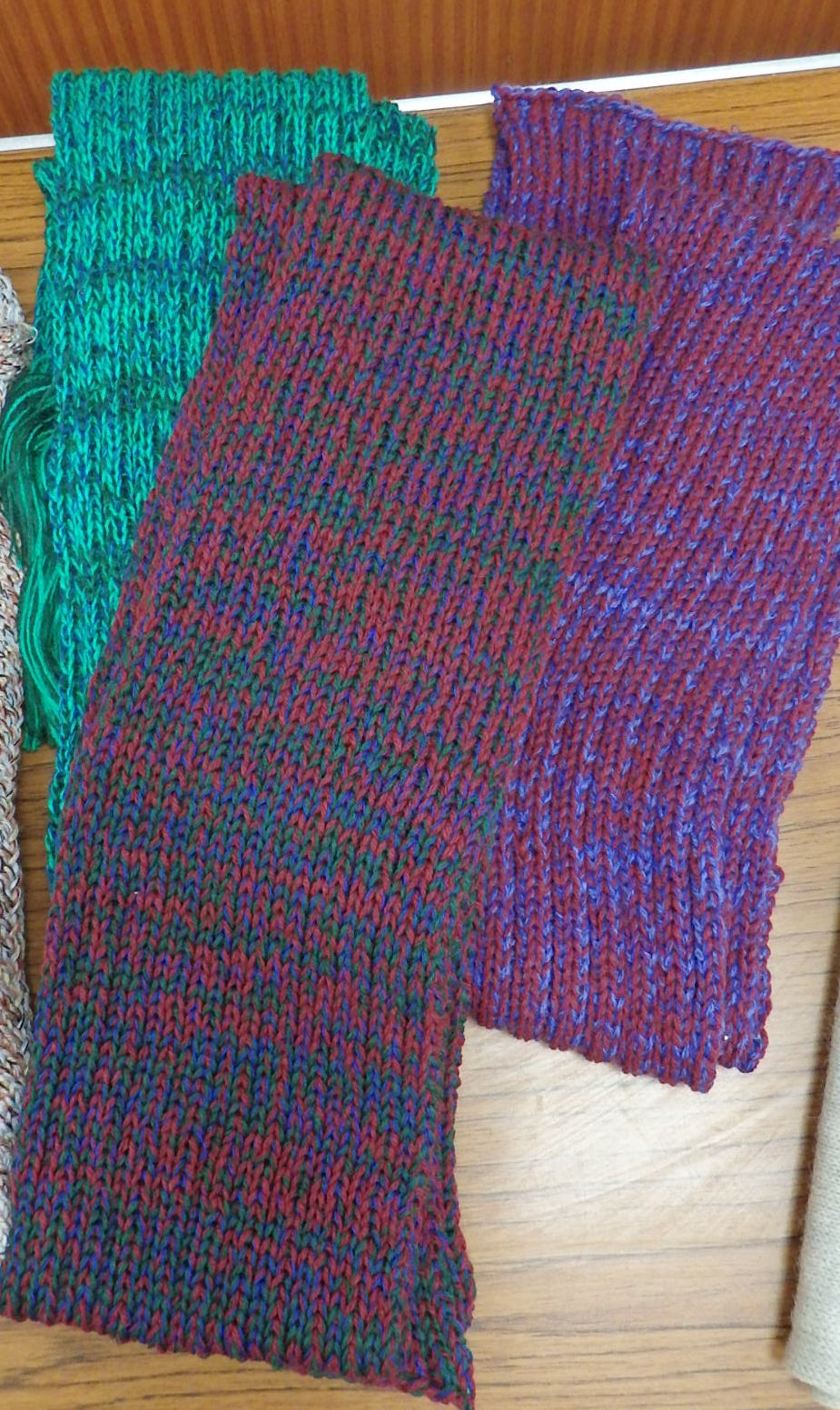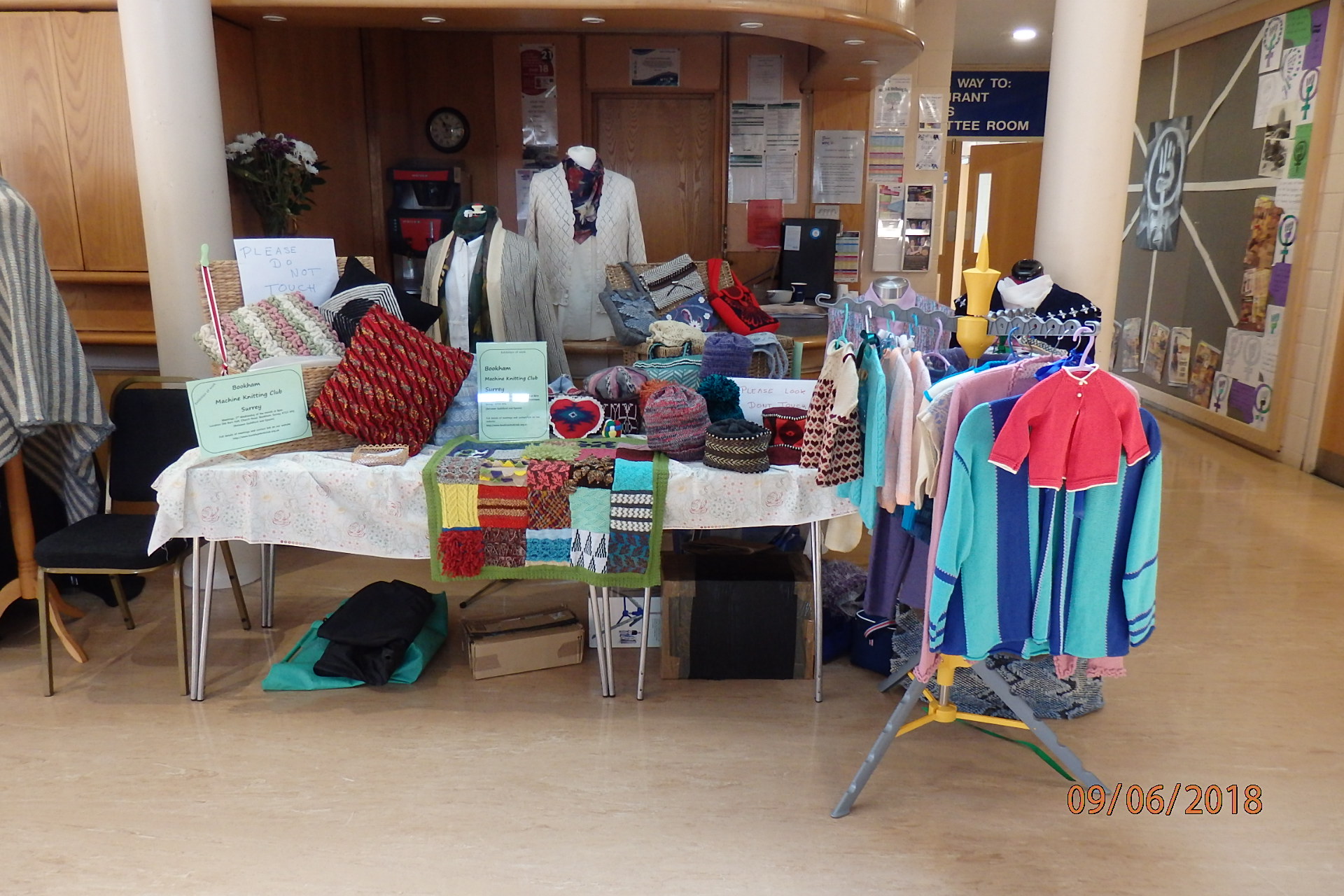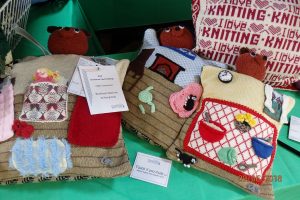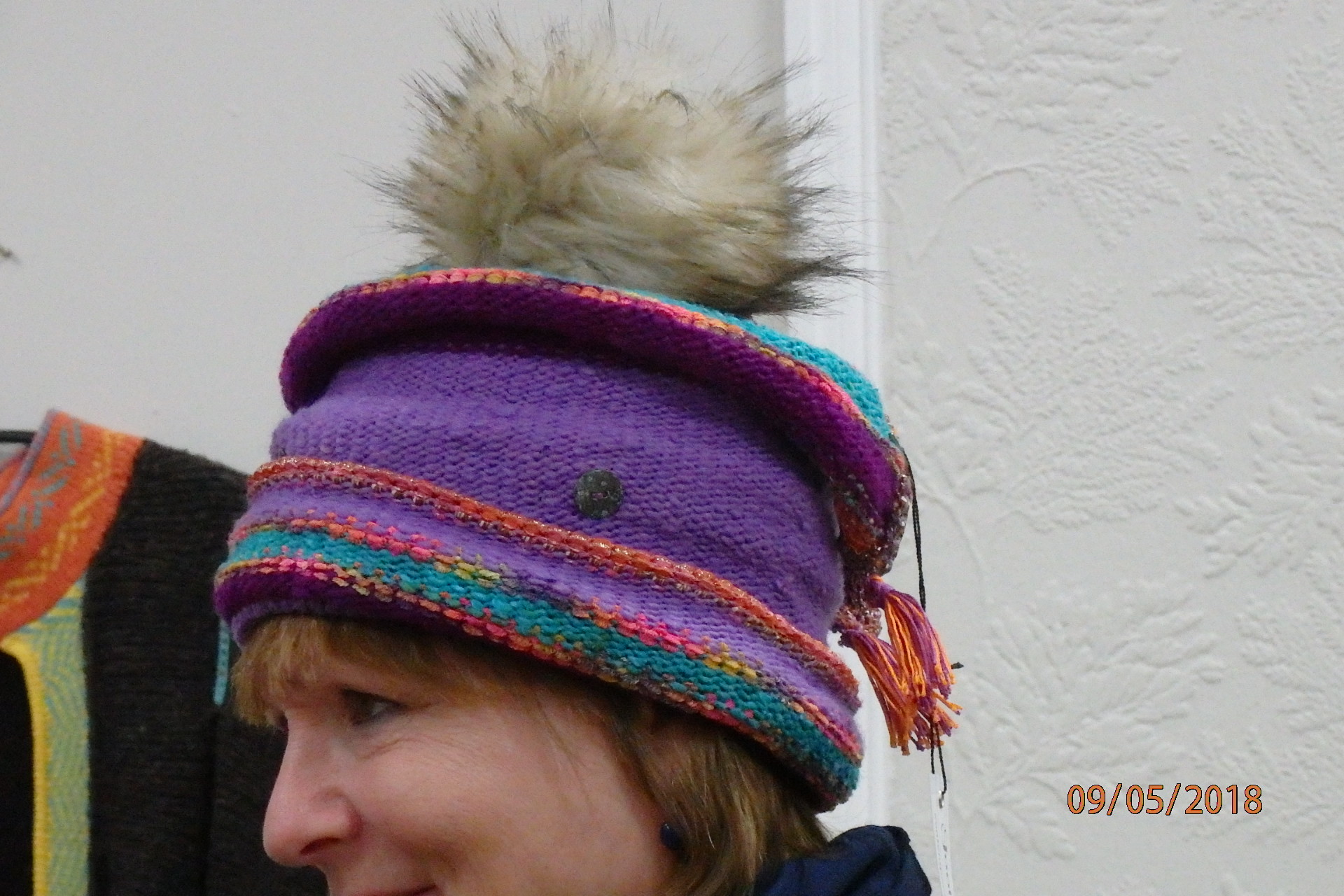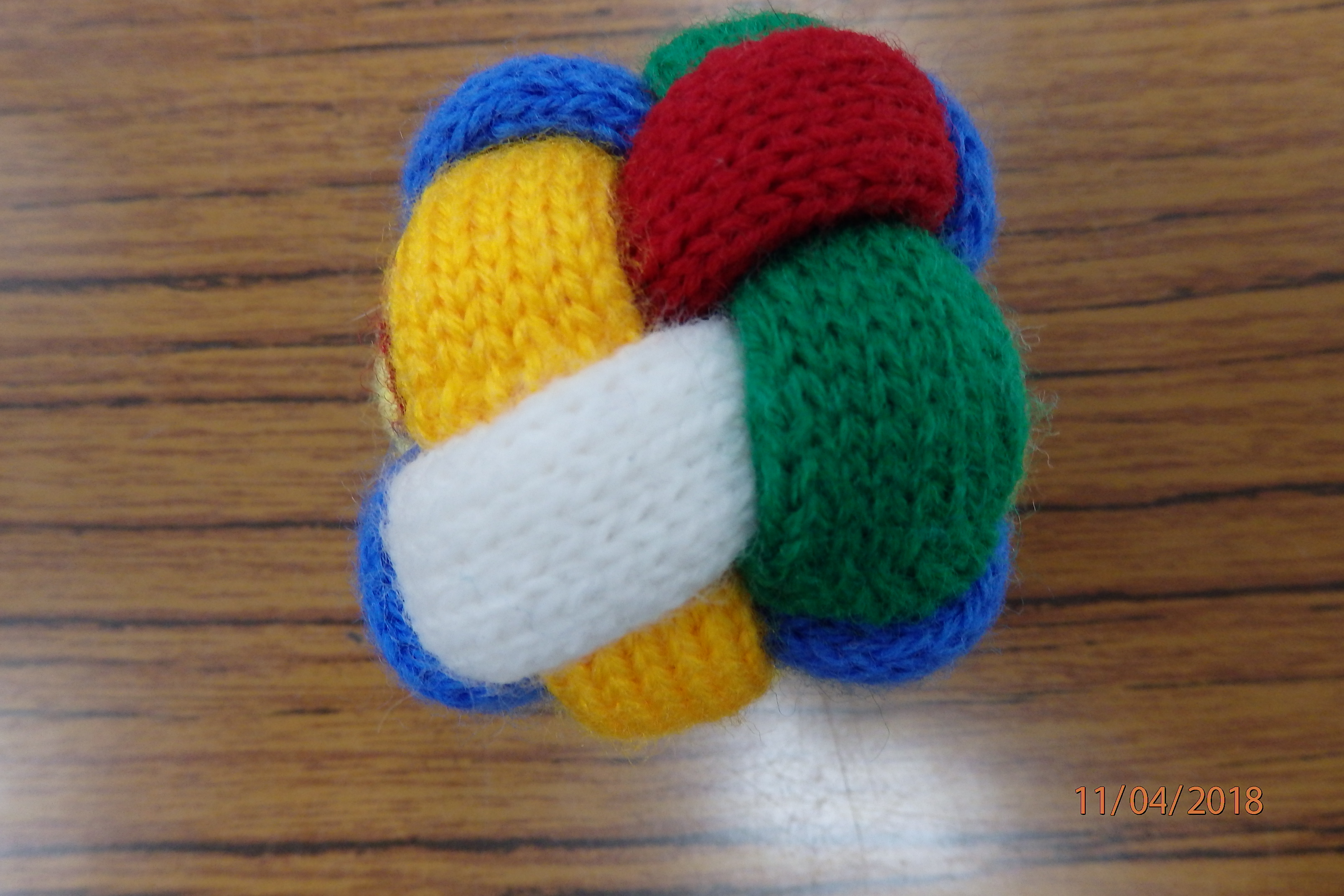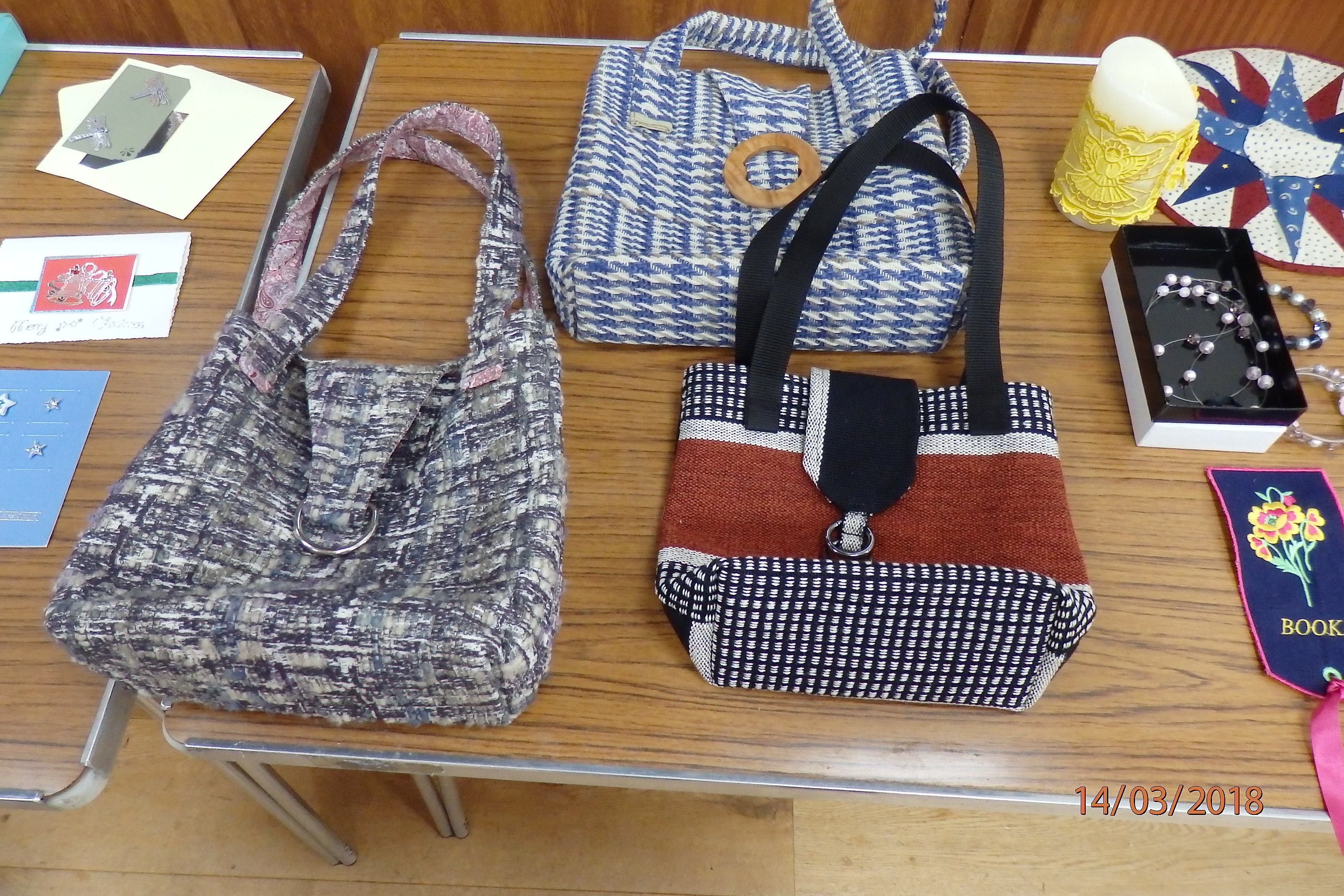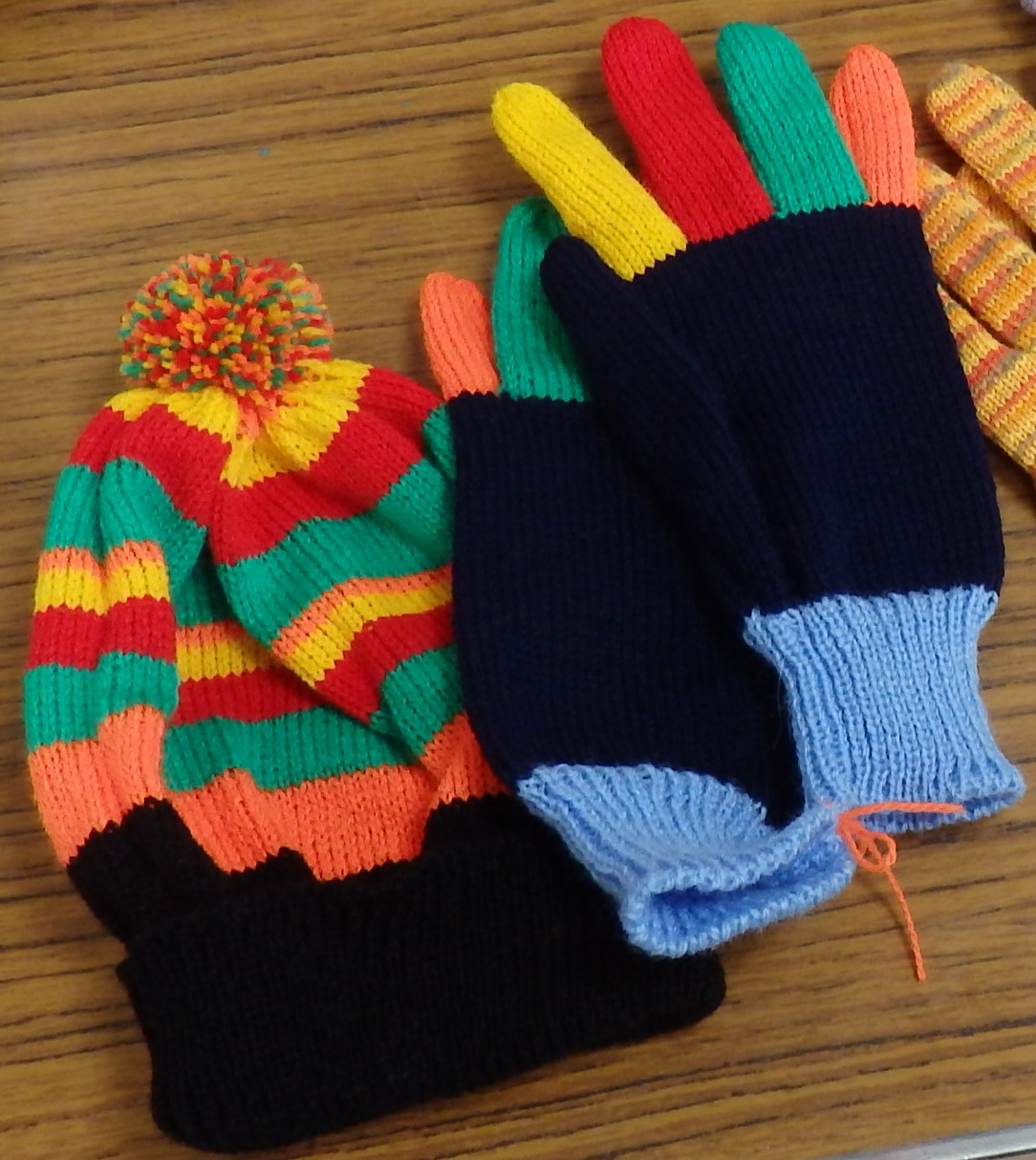Ideas for using Cone Ends
Gill started the evening with notices – Kingston Hospital (Surrey) has asked us to knit some breasts to aid midwives who are demonstrating breastfeeding. Those who watch the Call the Midwife series on the BBC may have noticed them in their clinic using similar aids. The pattern is for hand knit only, email Gill or Lyn for a copy of the pattern. Margaret, who has already made several ready to send off, said that they were quite tricky to knit unless you used small circular needles as the increasing and decreasing was hard on the hands. Please note these are not the same as the prosthetics created for breast cancer patients, there are a number of patterns for both hand and machine available elsewhere for those.
There was also a list of events:
- the Bournemouth Machine knitting show on Saturday 3rd March
- The Olympia Knit and Stitch show 1-3 March
- Unravel 16-18 February at Farnham Maltings
We continued the meeting with a show and tell. Several members showed off their creations, see photos below and then we got into groups to look at the samples, patterns and ideas everyone had for using up the cone ends at the end of this we came together to share ideas.
Show and tell
[ngg_images source=”galleries” container_ids=”12″ display_type=”photocrati-nextgen_basic_thumbnails” override_thumbnail_settings=”1″ thumbnail_width=”120″ thumbnail_height=”90″ thumbnail_crop=”0″ images_per_page=”20″ number_of_columns=”2″ ajax_pagination=”0″ show_all_in_lightbox=”0″ use_imagebrowser_effect=”0″ show_slideshow_link=”1″ slideshow_link_text=”[Show slideshow]” template=”/home/sites/lynlev.com/public_html/knitclub/wordpress/wp-content/plugins/nextgen-gallery/products/photocrati_nextgen/modules/ngglegacy/view/gallery-caption.php” slug=”Show-and-Tell” order_by=”sortorder” order_direction=”ASC” returns=”included” maximum_entity_count=”500″]
Cone Ends Examples
[ngg_images source=”galleries” container_ids=”11″ sortorder=”99,101,100,102,104,103,105″ display_type=”photocrati-nextgen_basic_thumbnails” override_thumbnail_settings=”1″ thumbnail_width=”120″ thumbnail_height=”90″ thumbnail_crop=”0″ images_per_page=”20″ number_of_columns=”2″ ajax_pagination=”0″ show_all_in_lightbox=”0″ use_imagebrowser_effect=”0″ show_slideshow_link=”1″ slideshow_link_text=”[Show slideshow]” slug=”Cone-ends-ideas” order_by=”sortorder” order_direction=”ASC” returns=”included” maximum_entity_count=”500″]
The other theme this evening was to use several yarns together to create a new yarn, often suitable for use on a chunky machine. Various techniques were demonstrated:
- Running yarns directly through a multi-way yarn mast
- Winding several yarns together on a standard cone winder
- Use of a yarn stack where the bottom yarns are run up the centre of the ones above.
- Using yarn twisted to create a brand new yarn from several thinner ones.
The club has its own electric yarn twister and one of the members brought a manual one and a yarn stack.
Margaret demonstrated how these were different when knitted up – the first two showed “rivers of colour”, an uneven distribution of the yarn colours. The twisted yarn was clearly better but the yarn stack although a little awkward to use with smaller cones, also distributed the colours well.
One member mentioned she had simulated a yarn stack using a tiered vegetable rack and magazines from the 1980’s showed people who used old style saucepan stands for the same purpose.
Finally, Frances demonstrated how to plate both plain and patterned using tuck stitch, she also showed us samples of ribber plating. You can use either a thick and a thin yarn or two yarns of similar weight. Together the yarns should add up to no more than the maximum your machine will handle – e.g. 4-ply / light double knitting.
The next meeting will be about other crafts that the members are interested in and also the theme from this meeting will continue, looking at some of the patterns people brought in as there was not enough time for everything.
